What's New
Displaying results 1901 - 1910 of 4052
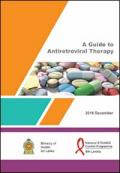
Resource | Guidelines,
Sri Lanka remains as a very low prevalent country for HIV since the first Sri Lankan was diagnosed with HIV in 1987. Current estimate (2015) for people living with HIV (PLHIV) is 4200 including estimated 100 children. By end 2015, a cumulative total of 2309 HIV positive persons were reported to National STD/AIDS Control Programme (NSACP) with a continued upward trend over years.
Antiretroviral therapy (ART) for prevention of mother to child transmission (PMTCT) was introduced and available free of charge for pregnant mothers diagnosed with HIV in Sri Lanka in 2002. All diagnosed PLHIV were linked to care at NSACP HIV clinics and ART was available and provided free of charge from 2004. At present, HIV care services are available in all provinces of Sri Lanka under direct supervision of consultant venereologists. Eligibility criteria for ART were changed over years and at present the country adhere to “Test and Treat” policy where everyone diagnosed with HIV are eligible for treatment irrespective of CD4 count, viral load or HIV clinical stage.

Resource | Guidelines,
Antiretroviral Therapy (ART) should be initiated in all pregnant and breastfeeding women living with HIV regardless of WHO clinical stage and at any CD4 cell count and should be continued lifelong.
ART should be initiated as early as 14 weeks of gestation or as soon as possible thereafter during pregnancy. However, even if they are identified late in pregnancy or postpartum, ART should be initiated immediately as it is the most effective way to prevent mother-to-child HIV transmission. All efforts should be made to identify HIV-infected pregnant women early enough to avoid the need for high-risk prophylaxis for infants.
The guidlines for management of pregnant women with HIV infection - 2016 was prepared to assist policymakers to plan prevention of mother-to-child transmission (PMTCT) interventions and healthcare workers to provide optimal services to pregnant mothers.
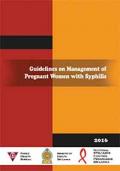
Resource | Guidelines,
Syphilis is a sexually transmitted disease which may cause genital ulcer disease in the primary or secondary stages. However, majority of persons infected with syphilis remain asymptomatic making it difficult to identify the infection. These asymptomatic patients can be identified only through serological screening. If a woman has symptomatic or asymptomatic syphilis, infection can be transmitted vertically from mother to child resulting in congenital syphilis in the baby.
Syphilis is a condition which can be cured with penicillin treatment. Treatment of pregnant women having syphilis with penicillin treatment prevents congenital infection. Early identification and treatment of syphilis among females will reduce the risk of both sexual transmission and mother to child transmission.
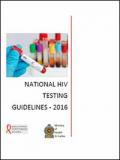
Resource | Guidelines,
Early detection and appropriate interventions improves survival and quality of life of people infected with HIV and reduces the risk of onward transmission. However, a significant proportion of people living with HIV, remain undiagnosed until they become symptomatic, therefore presenting late for treatment. Late presentation diminishes the impact of ART on morbidity and survival and delays adoption of preventive measures by persons living with HIV and their partners.
The national HIV testing guidelines is the principal document that sets out the objectives, principles and arrangements for HIV testing in Sri Lanka. These guidelines are based on the National AIDS Policy and National HIV Strategic Plan 2013-2017. They provide guidance on HIV testing in the country. This ensure quality screening and diagnostic testing become readily accessible, with the aim of identifying HIV infection early so that risk reduction and timely initiation of treatment of infected individuals will be facilitated. Aiming to address this, HIV testing is scaled up with protection from stigma and discrimination in variety of settings. In all settings under which people undergo HIV testing steps are taken to protect human rights and ethical principles.
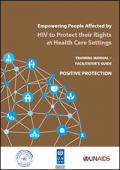
Resource | Tools,
The People Living with HIV Stigma Index conducted by the Cambodian Network of People living with HIV (2010) and a study conducted by the Asia Pacific Network of People Living with HIV (2012) revealed that people living with and affected by HIV experience discrimination in their daily lives, including denial of access to health services such as sexual and reproductive health services and dental care, and breach of confidentiality by health care providers. A recent study supported by Asia Catalyst has confirmed these practices continue even today.
This training manual, titled Positive Protection: Empowering People Affected by HIV to Protect their Rights at Health Care Settings, will contribute to meeting the SDGs by empowering people affected by HIV in Cambodia with the information, skills and strategies they need, in order to ensure that their rights are respected when they seek health care services and to have access to legal redress in the event of rights violations and to work collectively to identify and propose solutions to systemic issues.
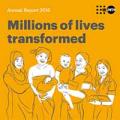
Resource | Publications,
UNFPA, the United Nations Population Fund, is proud to have enabled millions of women of childbearing age to exercise that right and to have helped to nearly double modern contraceptive use worldwide from 36 per cent in 1970 to 64 per cent in 2016.
Increasing access to voluntary planning has not only empowered more women to make decisions about the timing and spacing of pregnancies, but it has also led to better health outcomes for women and has helped reduce maternal deaths globally from 532,000 in 1990 to 303,000 in 2016.
This annual report shows how funds entrusted to UNFPA have enabled us to protect and promote the health and rights of millions of women and young people and enable them to realize their full potential. The numbers in this report speak for themselves.
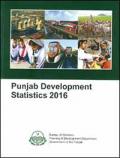
Resource | Publications,
Bureau of Statistics has been issuing this publication since 1972. The present edition is the 42nd in the series. It provides important statistics in respect of social, economic and financial sectors of the economy at aggregate as well as sectoral levels. This publication contains data on almost all sectors of the Provincial economy with their break-up by Tehsil, District & Division as far as possible. Two tables on Vital Statistics and Total Number of Registerd Voters are also added in this issue.
It includes some national data on important subjects like Major Crops, Foreign Trade, Labour Force & Employment, National Accounts, Population, Price and Transport etc.
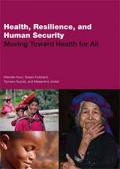
Resource | Publications,
The purpose of this document is to explain to experts in the health and development fields what a human security approach is and show how it can be applied in an attempt to put individuals and communities on a path toward achieving a virtuous cycle of good health, wellbeing, and resilience. In particular, the document focuses on how the human security approach addresses the linkages among different sources of health threats and ensures that interventions are integrated so as to build and sustain health resilience at the individual, community, and institutional levels as a path toward health for all through universal health coverage (UHC).
It also focuses on how human security can help translate health gains into improvements in wellbeing on a larger scale. In other words, an emphasis on human security can help us to move beyond focusing on survival to focusing on livelihoods, wellbeing, and dignity.
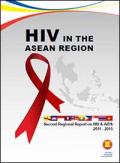
Resource | Publications,
Responding to the call by the Fourth ASEAN Summit in Singapore in 1992, the ASEAN Task Force on AIDS (ATFOA) was established to implement regional activities on health and HIV and AIDS. ATFOA aims to curb and monitor the spread of HIV, and its work has been guided by global commitments on HIV and a series of work plans. HIV in the ASEAN Region is the second ASEAN Regional Report on HIV and AIDS and reports on the achievements of ASEAN Member States (AMS) in implementing the 4th ATFOA work plan for the period 2011 – 2015. In this period, AMS have been working towards the achievement of ambitious country-set targets under the umbrella of the UNAIDS 2011-2015 strategy, Getting to Zero and guided by the goals enshrined in the 2011 ASEAN Declaration of Commitment: Getting to Zero New HIV Infections, Zero Discrimination, Zero AIDS-Related Deaths (Annex One).
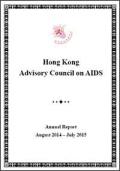
Resource | Publications,
AIDS (Acquired Immune Deficiency Syndrome) is caused by HIV (Human Immunodeficiency Virus), and in the absence of treatment, approximately half of the HIV-infected people will progress to AIDS in 10 years’ time. The main routes of HIV transmission are: sexual, injecting drug use, blood-borne and from mother to child. Hong Kong’s first HIV cases were reported in 1984. Similar to the trend in many other developed countries, the early HIV infections mainly arose from blood or blood products transfusion. Later sexual transmission, including heterosexual and homosexual contacts, became the commonest route of HIV transmission. It accounted for 76% of all reported HIV cases in Hong Kong as at 30 June 2015.
Monitoring and understanding the current HIV/AIDS situation is crucial for the planning and implementation of prevention and care. HIV/AIDS surveillance comprises a framework of systematic and consistent monitoring, encompassing the key components of collection, collation and analysis of HIV/AIDS data, followed by the interpretation and dissemination of the relevant information. Timely information derived from this HIV/AIDS surveillance is indispensable for developing effective prevention and control programmes.





